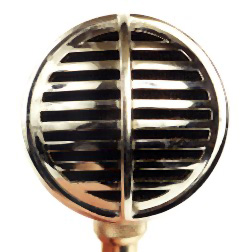Microphone Elements Explained
For this week’s Harmonica Microphones post we asked Greg Heumann to give us the low-down on the bewildering universe of mic elements. In the first of a double post, he describes two kinds of elements used for amplified blues harp and… well, it gets technical after that.
 There are many kinds of elements in all of microphone-dom, including ribbon mics, condensers, electret, crystal and dynamic. Acoustic players may well use any of these. However, except in the recording studio, amplified players will only be concerned with dynamic and crystal elements.
There are many kinds of elements in all of microphone-dom, including ribbon mics, condensers, electret, crystal and dynamic. Acoustic players may well use any of these. However, except in the recording studio, amplified players will only be concerned with dynamic and crystal elements.
Fact 1: There is no such thing as a mic element designed for harmonica players.
Every microphone uses an element that was designed for more general purposes. As a rule, the more expensive a mic was when new, relative to other mics of its vintage, the better it performs as a general purpose mic. To engineers, this means it has better frequency response (able to “hear” higher and lower sounds), flatter frequency response (no particular frequencies are made significantly louder or softer), and/or more “headroom” (the ability to tolerate higher sound pressure levels without distorting).
In this case “better” is usually means better for acoustic players. But… (more…)

 Elwood’s Note: “I’m pretty ignorant when it comes to harmonica mics. When you ask me what my favourite element is, I normally choose between earth, wind, water and fire. I thought “Impedance” was a stigmatised medical condition which affects 50 percent of all men. That’s why we asked Greg Heumann at
Elwood’s Note: “I’m pretty ignorant when it comes to harmonica mics. When you ask me what my favourite element is, I normally choose between earth, wind, water and fire. I thought “Impedance” was a stigmatised medical condition which affects 50 percent of all men. That’s why we asked Greg Heumann at 